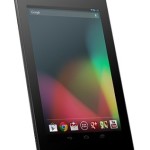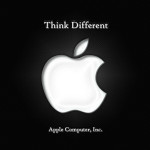
Storage devices have gone through a lot in its evolution since its first introduction in 1956. Throughout the years, technology improved in huge leaps and bounds, making it easier for computer hardware companies to create and integrate different kinds of storage devices. Every computer right now has its own storage device, sometimes big and sometimes small. The history of these devices dates back several decades. These devices have gone through a lot of changes in the past, but without these changes and innovations, storage devices today would be different.
The history of technology is quite interesting. Many storage devices and other computer components today are really small compared to their old counter parts. Let me give you an example: the 305 RAMAC was the first ever hard drive (introduced by IBM in 1956). It weighed a ton, literally. The storage capacity of this device was only 5 MB. Today a standard hard drive would weigh around 1.3 – 1.6 lbs. and it could store data from around 250 GB up to 2 TB or even more. Technology has truly improved over the years and really a lot has changed over the years of its development.
Hard Drive
In the year 1956, the “big boy” computer company, IBM, introduced the first ever hard drive, “305 RAMAC”. Even though that this hard drive weighed a ton, making it very inconvenient to use in home, this is what started the redesigning and the refinement of hard drives by IBM and other computer companies. Today, as mentioned before, hard drives are now smaller, lighter and can contain more memory compared to the older versions of the said technology.
Portable Storage Devices
Following their 305 ROMAC, IBM introduced the floppy disk. The floppy disk consists of a circular piece of thin, magnetic storage medium, it is then contained within a plastic rectangle. It can handle 80 kilobytes of data. This was mainly used for transferring files between computer units. These kind of technology has completely been redesigned and refined over the course of the technological era. Companies now aim for smaller devices yet holds more memory than before.
Optical Storage Devices
Sony and Philips released the first ever compact disc in the 1980’s. The CD’s could store digital data such as audio and files. Sony and Philips released these discs after a decade of work and research. In order for the computer to read the data stored within the CD, the computer must have a CD-ROM drive. The CD-ROM uses the same physical format of that of a CD. In 1985, Sony and Philips introduced the CD to the public. The CD, as much as it is today, holds at around 700 megabytes of data.
Modern Times
In today’s modern world, one of the most trending practice in creating storage devices is that the smaller the size, the better. This practice is being kept in mind when computer companies create different kinds of technologies to store our data in.
Storage devices nowadays are constantly being redesigned and refined to meet the needs of the users. Now, due to the increased popularity of the Internet, saving of data (e.g. photos, videos, documents) can now be done in the Internet or the “cloud”. This means that a user would not need any physical device to store his data, rather he would just need to have access to the Internet.






